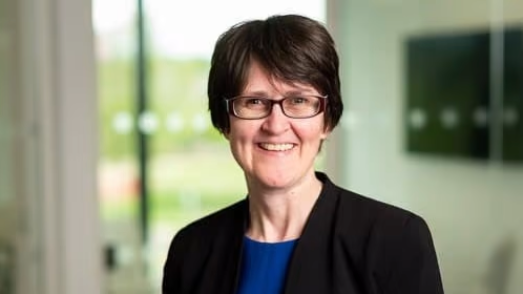GV, Northpond Ventures and Sanofi Ventures have joined forces to pump $100 million into OMass Therapeutics, teeing the British biotech up to advance candidates against hard-to-hit targets toward the clinic.
CEO Ros Deegan frames OMass’ platform as a way to give fidelity and precision, rather than having to decide between the two. The traditional trade-off is faced across two current approaches—cell and cell-free. Cell-free shows precisely how a molecule interacts with a target but is stripped of other elements, such as endogenous regulatory molecules, that could influence the interaction in vivo. A cell-based approach retains those other elements, but this adds confounding factors. OMass’ platform is intended to provide a middle ground.
“There are all these examples in the industry of where people have gone down blind alleys. They think they’re inhibiting or activating a particular protein and then it turns out that they’re doing something completely different in the pathway, that just happens to have the same kind of downstream outcome,” Deegan said.
OMass’ attempt to provide both fidelity and precision has manifested in OdyssION, a platform built on the work of the University of Oxford’s Dame Carol Robinson. The platform equips OMass to measure the mass changes when molecules bind to proteins.
“We’re looking at more than just the target. We look at interactions between the target and molecules in its ecosystem,” Deegan said. “We try to get as near a native ecosystem as we can. We often extract endogenous regulation molecules just naturally with the proteins of interest, so you can identify those.”
The platform combines biochemistry techniques and custom chemistry with native mass spectrometry, a way to study intact protein-protein and protein-ligand complexes in their biological state. Research into native mass spectrometry goes back years, but, by combining technology from Robinson, a pioneer in the field, with other capabilities and applying the approach to drug discovery, OMass has set itself apart.
Now, OMass is working to show whether the platform can deliver candidates that work in the clinic. The biotech has disclosed work on an insurmountable antagonist of MC2 in a genetic adrenal gland disorder, a gasdermin D inhibitor in inflammatory diseases and a GPR65 agonist for the treatment of inflammatory bowel disease.
Each target poses challenges. The patients that would be targeted by the MC2 program have very high concentrations of the natural ligand, leading OMass to look into molecules with long residency times and allosteric modulators. OMass has chemistry against both approaches. The biotech has taken the GPR65 program to lead optimization while generating early chemistry on gasdermin D, a target Deegan calls “really tough.”
Liftstream, a U.K. life sciences executive search firm, commended OMass in 2020 for the diversity of its board. Today, five members of the nine-person board are female. In Deegan and Robinson, OMass also has a female CEO and founder.
The female-led company wants to take its specialty immunology and rare disease drugs to market itself while partnering for larger indications and using the platform in strategic discovery collaborations. GV, Northpond and Sanofi plus existing investors Syncona, Oxford Science Enterprises and the University of Oxford have bought into the plan, resulting in a relatively painless $100 million raise for a preclinical European biotech.
“Although everything I read was slightly depressing, my actual experience was very pleasant,” Deegan said. “We saw a big appetite for this technology. I think when you’re doing something that truly is very different, you’ve got a differentiated platform, you’ve got differentiated assets, then you can attract both high quality and significant funding as a private company.”

